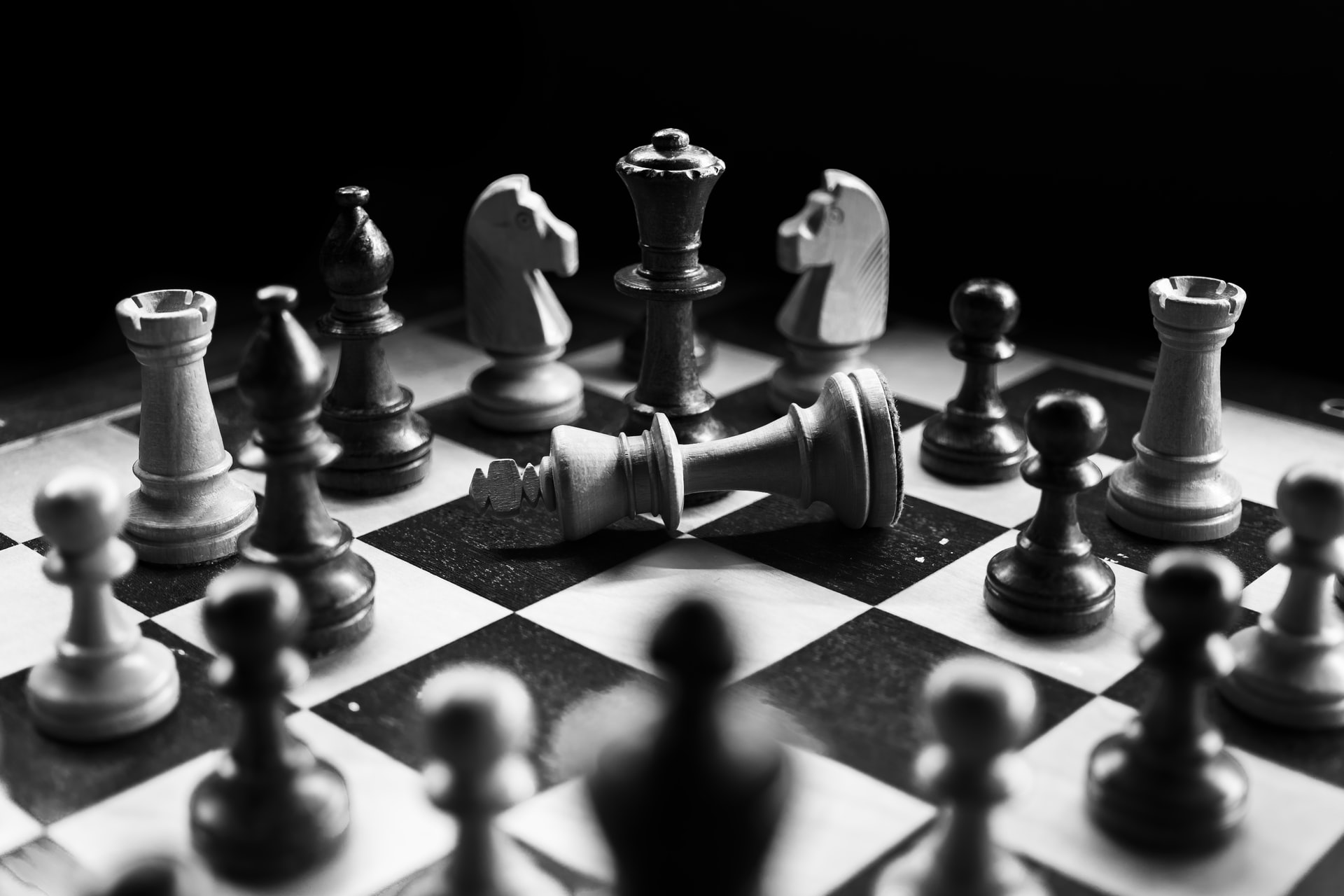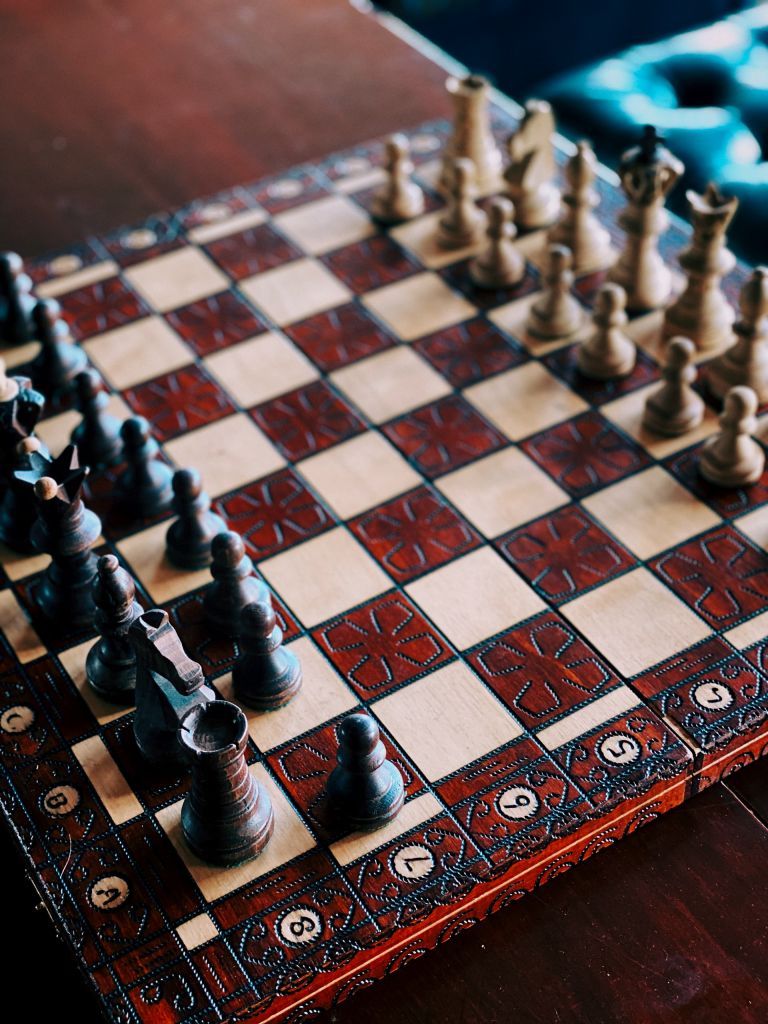
Chess is a very intelligent and useful game that develops attention and logical and strategic thinking. If you have long dreamed of trying your hand at chess, this article is for you.
Modern science believes that the first known prototype of chess – the Indian game “chaturanga” – was created around the 6th century AD. The Persians borrowed the concept of the game from the Indians, creating their own version, and after the Arab conquest of Persia in the 7th century, the game spread within the Arab Caliphate under the name “shatranj”
This version was very similar to modern chess: two players, a board of 64 squares, the same pieces. Today, chess is still very popular, and on the wave of success of the Netflix production “Queen’s Gambit” experienced a real renaissance. Millions of people around the world wanted to try this noble game.
Learning to play chess for adults is not as difficult as it might seem at first glance. The first step, of course, is to purchase a chess set. There are many models, from inexpensive mass-produced ones to collectible and hand-made ones. Here everyone should make a choice taking into account their own taste.
Having a computer or smartphone at your disposal, you can also learn to play chess with the help of online portals and applications. Of course, this is not the same as a real chessboard, but it has its advantages, which we will tell you about in a moment.
You need to understand that chess is not a linear game, in which it is enough to know how you can move the figures. Of course, rules are the basis, but tactics and strategy are no less important. This is something that develops with experience during training and requires patience.
A chessboard always consists of 32 black and 32 white squares arranged alternately in 8 rows and 8 columns. The rows that run from the closest edge of one chess player’s board to the closest edge of another are called vertical. Rows that run at right angles to them are called horizontal. Rows of boxes of the same color that meet each other with their corners are called diagonals.
The chessboard must be placed in such a way that the right corner field on each chess player’s side is white.

Chess pieces are either white or black. Each player starts with a set of 16 pieces. White always makes the first move, followed by black, and so on, alternating until the game is over. Each chess piece has its initial position on the board. The horizontal row closest to the player should look like this (from left to right):
The second horizontal row is occupied entirely by pawns.
Each chess piece moves in its own characteristic way, and this is another basic piece of information that you need to acquire before you start practicing chess plays, openings, debuts, and gambits.
Pawn. It can only go forward and only one field. The exception is the first move, which can be a jump of two fields forward. During this move it is possible to make the so called through-beating. A pawn can only move forward and diagonally from its occupied square.
Rook. It moves any number of squares horizontally or vertically. A characteristic feature of a rook is the ability to perform castling. This is a double movement of pieces (rook and king) in one turn, under certain conditions.
Chaser. Initially each player has 2 bishops – one walks only on black fields and the other only on white fields. Both move only diagonally, but by any number of squares.
Jumper. He moves in any direction two fields horizontally or vertically and one field perpendicularly, i.e. he makes an “L”-shaped move. The peculiarity of the jumper is that it “sees no obstacles”. It does not walk like other pieces, but jumps over both allies and opponents.
Hetman. The strongest figure on the chessboard. He can move in any direction (vertically, horizontally and diagonally) by any number of spaces.
King. The main figure on a chessboard. The most valuable, but not the strongest. It moves like a hetman, in all directions (vertical, horizontal and diagonal), but only by one field.
Chess is when the king is threatened, but the player is able to defend it. On the other hand, checkmate is a position in which the King has no possibility of escape, and in the next move would be killed. We can also talk about such a situation as stalemate – it’s a technical draw when chess has not been declared, but making the next move is impossible because it would endanger the king.
In chess there are no obligatory moves, except when chess occurs and the king must be saved. Every piece, except pawn and knight, if it encounters an obstacle in the form of an opponent’s piece, destroys the enemy, taking its place. However, the main target of each player is the king. To defeat him definitely ends the game.
Various sets of chess tasks with solutions can be easily found on the Internet and in bookstores. Usually, a certain position is given in them and you have to find the right combination of moves that will lead to victory. Beginners are advised to solve the problems directly on the chessboard.
It is a good idea to find a playing partner, and although it will sound strange, it is best if it is an experienced person. If you don’t know anyone like that, you can use chess portals and choose opponents with higher rankings. Of course you have to be prepared for your first games to end in defeat, but losing to a stronger opponent will benefit you more than winning against a weaker one
Don’t spend too much time playing against the computer – it’s a challenge to win because the algorithm has prepared answers for every move you make. It’s better to play with someone who will be able to give you some useful tips.
This is an important part of every chess player’s development – a thorough analysis of every move with special attention to the most troublesome moments. During a regular game, you don’t always have enough time to think about it, so going back to it calmly allows you to discover more possibilities and point out the basic mistakes you made
With some online games, a record of your gameplay is kept automatically. If you’re playing live, you’ll need to make the appropriate notes yourself so you can go back to them. That is why you should always have a notebook with you.
Even if your skills still leave a lot to be desired, decide to participate in a tournament. This will give you a chance to play against the best and see how the pros play and what tactics they use. Such a jump into the deep end can be really useful, and your chess ignorance can sometimes play to your advantage – after all, as a novice you can be unpredictable to more experienced players.
It doesn’t matter how old you are or whether you’re starting your chess adventure completely from scratch – anyone can master chess. All you need is the right motivation and daily practice. Remember that victory teaches you only one thing and defeat a thousand, so learn from every lost game and don’t get discouraged.
Main Photo: Felix Mittermeier/unsplash.com